“A heavenly day in the hills touring the Pueblos Blancos (White Villages of Andalucia) near Marbella and Sotogrande”. Lisa
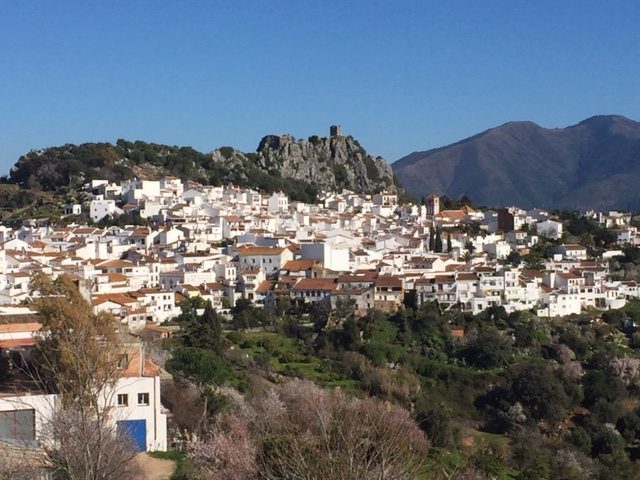
Andalucia covers a huge expanse of Southern Spain and boasts some of the country’s best-known tourist attractions such as The Alhambra in Granada, Plazas de España and Giralda in Seville, not to mention the delightful and much-visited cities of Córdoba and Antequera. So, it’s easy to think a visit to Andalucía means a beach or city/sightseeing holiday, or a combo of both.
We say, why limit yourself when you can have it all? Base yourself in the Sotogrande or Marbella area and take a day trip, or two, far from the throngs of either and into a landscape that seems to stretch forever.
Forget the beach towels and traffic, skip the queues and head for the hills… you won’t be disappointed!
An easy day out, especially from the Sotogrande area is to head due north, towards Ronda and take in two very charming white villages, Casares and Gaucín. A little further up, there is a third village, Ubrique, which is better known for its leather goods than its beauty. All three can be visited in a day, but you’ll need to work around opening hours.
There are innumerable Pueblos Blancos (white villages) in Andalucía, sweeping from Cádiz province in the west to Málaga province in the east and almost to Córdoba in the north. An entire circuit would be a marvelous way to see the countryside and could continue for weeks!
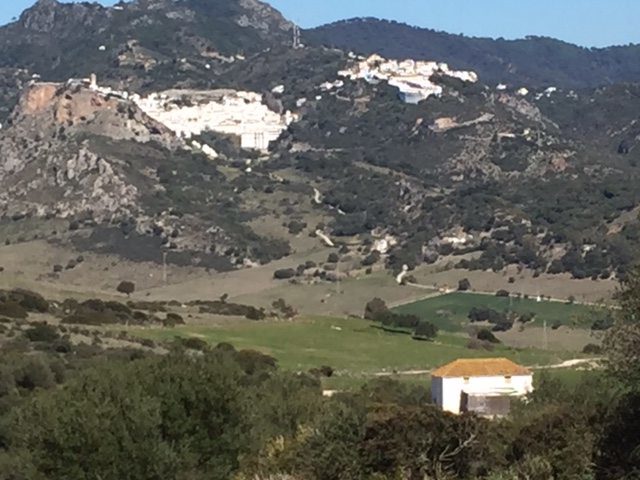
Hairpin bends climb away from the coast through fertile red fields, past craggy rocks and across a patchwork of green valleys rising to meet picturesque white villages hanging from precipice-like edges.
Look ahead and pin-prick white pueblos appear dotted across the horizon – seemingly a jumble of whitewashed houses tumbling down the rock faces. You immediately ask yourself who could have constructed such precarious strongholds and you reach for the travel guide which tells you that what you are seeing are mainly Moorish settlements dating back to medieval times. What you don’t see are the cave dwellings and many vestiges of prehistoric man which are also strewn throughout the landscape.
All in all, a land that has been functioning for many centuries and now offers all the delights that a modern-day traveller will revel in. History, views, restaurants, boutique hotels, sights and shops – what more could you want?
1st stop – Casares (the lowest village) – Elevation: 246 msl
Made famous in Roman times by Julius Caesar who partook of the local sulfuric spring waters and cured a liver complaint. The spring still exists today.
A leisurely meander through the pristine village with its whitewashed walls and red/brown tiled roofs is a very pleasant pastime. Stop and look out across the Mediterranean and you’ll be awed by the sweeping views out to the iconic rock of Gibraltar and the Atlas mountains, in Africa, that feel so close you could almost touch them.
In Casares, a maze of electric cables overhead cobblestone streets and centuries-old, thick, stone walls connects the New World with the Old. Dogs bark, donkeys bray in the distance, eagles and hawks soar overhead. The air is thick with the scent of almond and orange blossoms and it seems as though you’ve reached another world.
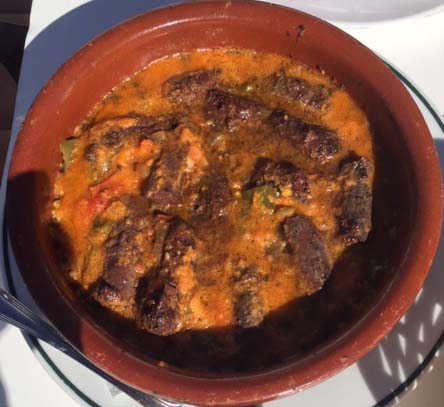
Back to reality. A flurry of cars leaving the village marks the beginning of the siesta and quiet descends.
The sound of pots clattering in kitchens closely followed by wonderful smells wafting from the narrow doorways announce that the midday meal is being prepared. Time to find a watering hole.
Venta el Mirador may not be the best-kept secret in Casares, but the terraces have absolutely divine views and breezes. The staff is super sweet and the food robust and inexpensive. All made in-house.
2nd stop – Gaucín – Elevation: 600 msl
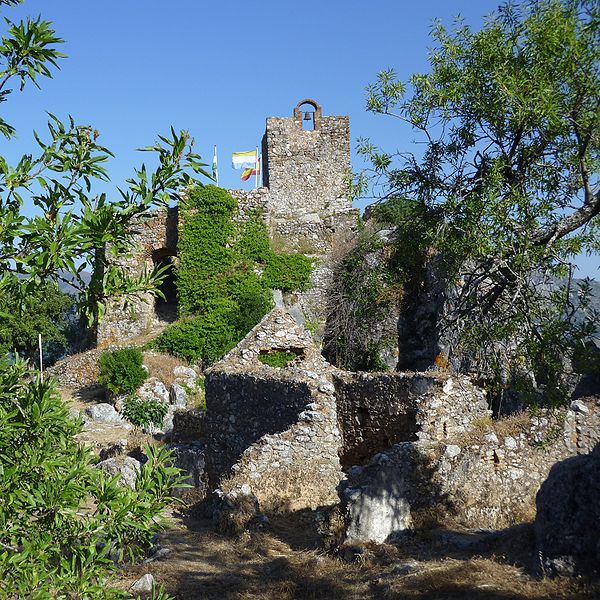
15 minutes and 150 ear-popping blind bends later and you feel as if you’re ascending to the top of the world. The air up here seems cleaner, the sun brighter, the breezes a little more brisk.
The hillside below is dotted with horses, sheep and grazing cows that seem to cling to the edge of the hillside pastures where they graze.
The streets ramble on until you don’t know where you are or which direction you’re facing. Ah, the joy of getting lost in a small village where you know you cannot wander into too much trouble. Gaucín is a labyrinth of cobblestone walkways with shiny white walls hiding Andalucían secrets.
All streets do not lead to the castle, but you can figure out the route by the way the houses become more prosperous looking and the roads (all one-way) become a little wider. The street leading to the castle entrance is lined with orange trees. In the winter months, when the trees are heavy with aromatic fruit, you can pluck the juicy orange fruit at your whim as you walk.

The stunning Castillo de Aguila – the Eagle’s Castle – (doesn’t take much to figure out how it got that name) sits in a preposterously precarious position. Its colourful history dates from Roman times to as recently as the Second World War. Aside from the magnificent yarns spun about the place, the castle has been the focus of poets and artists throughout the centuries – with two of the most famous being Romantic-era artists David Roberts from Scotland, and Pérez Villamil from Northern Spain. Both of which, to me, capture the scene better than modern day photography can.
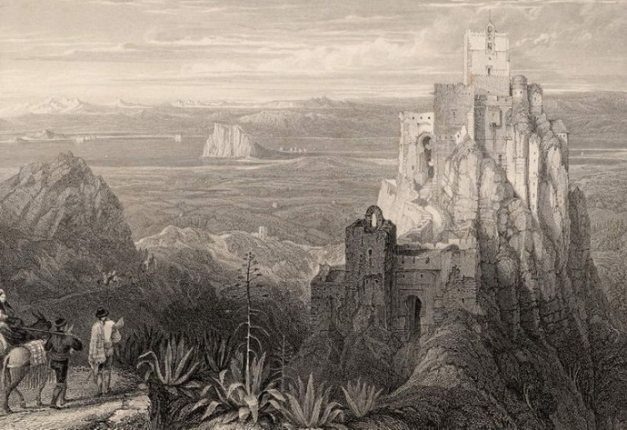
Gaucín also offers a number of chic little boutiques, souvenir shops a few great restaurants. Make sure you arrive when they are open!
Know Before You Go
- Everything shuts for lunch – really! The Spanish siesta takes precedence over everything else between 2pm and 5pm. Shops will shut, cafés, even some restaurants close by 3pm – especially in the winter months. Plan your day to leave in the morning, enjoy a long lingering lunch between village visits and return in early evening.
- Streets are narrow and parking places are not plentiful, so if you find an open space on the outskirts of the village grab it and be prepared for a walk.
- Rent a good car – these are fun roads to drive and plenty of acceleration and good breaking will come in handy. You never know when a stray sheep or goat may cross your path.
- Wear rubber-soled shoes, preferably without heels.
Where to Eat
- Finca Cortesin Hotel – All restaurants and the beach club, Casares +34 952 93 78 00
- Arroyo Hondo Restaurant, Casares +34 952 89 51 52
- Venta Garcia Restaurant, Casares +34 952 89 41 91
- El Lateral Restaurant, Gaucín +34 951 97 99 16







